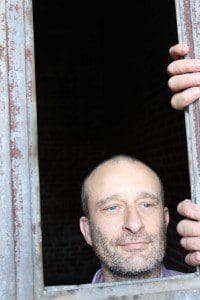Jo Strømgren on “The Doll’s House”
 A while back, Festival information manager extraordinaire Josh McIlvain caught up with Jo Strømgren about A Doll’s House, which opens tonight. Advance tickets for tonight and tomorrow afternoon are sold out, but tix for Saturday night and Sunday afternoon are still available. And hey, it’s at our pretty new(ish) home! Catch up with Jo below, about what it means to interpret and interpolate Ibsen today.
A while back, Festival information manager extraordinaire Josh McIlvain caught up with Jo Strømgren about A Doll’s House, which opens tonight. Advance tickets for tonight and tomorrow afternoon are sold out, but tix for Saturday night and Sunday afternoon are still available. And hey, it’s at our pretty new(ish) home! Catch up with Jo below, about what it means to interpret and interpolate Ibsen today.
Why did you feel compelled to do a version of A Doll’s House? And now that you’re in it, what has emerged as the most compelling aspect of doing it?
A Doll’s House is probably the most frequently performed play in history, which means that audiences around may be familiar with the story or at least the theme. Common references are always good for directors as it allows them take the audience on off-piste hikes without necessarily causing confusion. In other words, a classic can often give more artistic freedom than new plays.
How are you treating the script? And what does this allow you to do?
A classic text, like Ibsen, can easily become archaic if one has to much respect for the words. By not treating it as literature but as spoken dialogue, I have of course made major changes. Nevertheless, I feel this production is far more true to the original text than many other versions of the play. I have not made major cuts, nor have I chosen to focus on certain scenes to pursue statements or interpretations. It’s Ibsen to the core, and he is not a hostage for my own personal ambitions and ideas. I hope the balance between respect and disrespect will be appreciated.
What is the set and how are the actors working with it? How did you come about with the idea working within that physical framework?
There is a tiny house on stage, stuffed and crammed, with hardly any place to move. It’s a simple metaphor. A place one sooner or later has to get out of in order to breathe and get a proper life. I think it’s a normal feeling, when domestic disagreements arise any house feels too small. In terms of acting style, it’s always interesting to alter the circumstances in order to avoid a 1:1 documentary style. Most theatre does this in one way or another. I suppose it adds a level of abstraction and abstraction is always good for the spectator: it stimulates association.
What are the themes you are playing with the most, or that feel the most electric to you?
Interpretations of the play has traditionally been focusing on the gender equality issue. However, I find the other issues in the play more interesting. Like the question of trust and commitment between people. On that level, the play will be forever contemporary.
Are there things about A Doll’s House or Ibsen that you need to be Norwegian to understand? And do American actors allow you to do things differently with the material?
Ibsen is no longer a Norwegian reference, he belongs to the world. Just like Shakespeare isn’t English and Tchekov isn’t Russian. Apart from the names of the characters and the monetary currencies mentioned, there is absolutely nothing site specific about the A Doll’s House. However, it is certainly play with particular relevance to the Western world. It’s discussions of typical Western moral values, taboos, and life expectations may not be so relevant in all continents, depending on religion and culture. In that sense, whether it’s performed by Americans or Norwegians or future inhabitants on Mars – the play is still the same.
–Josh McIlvain


